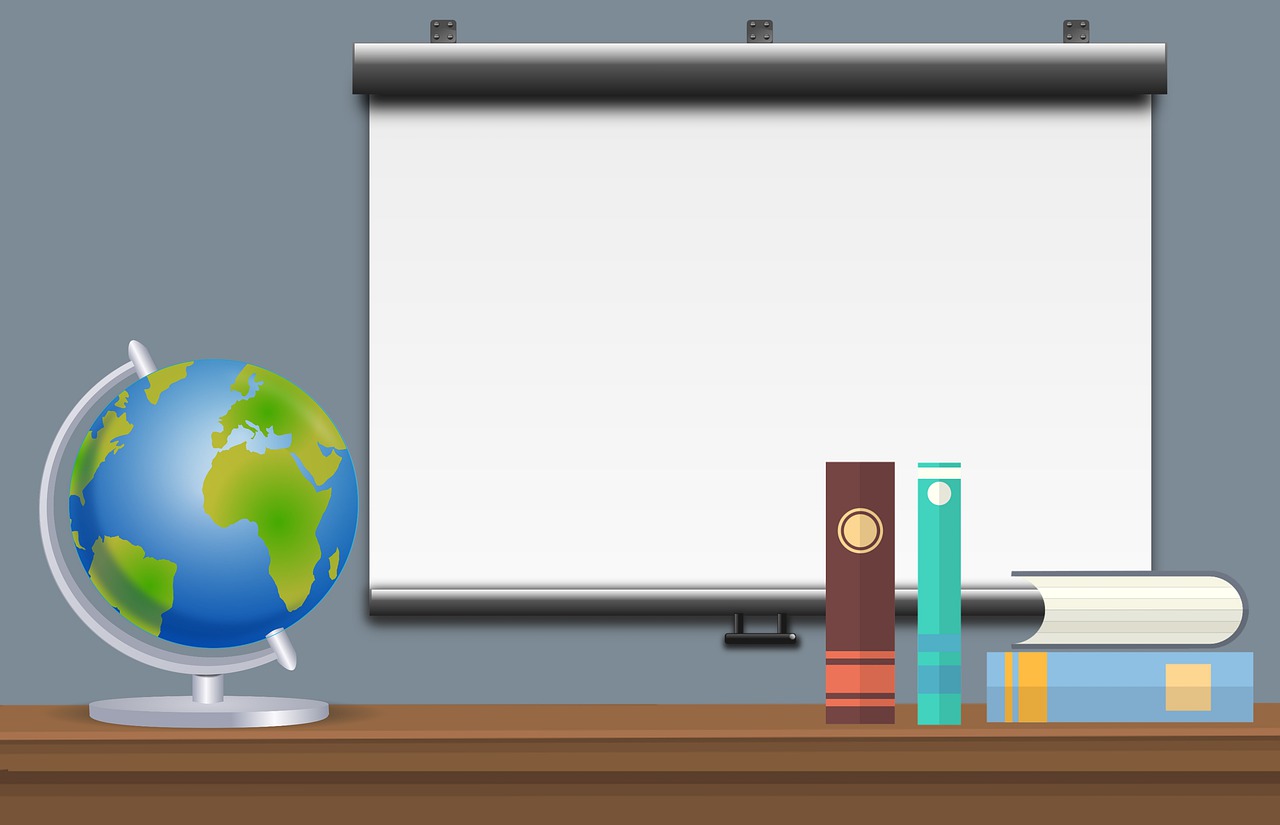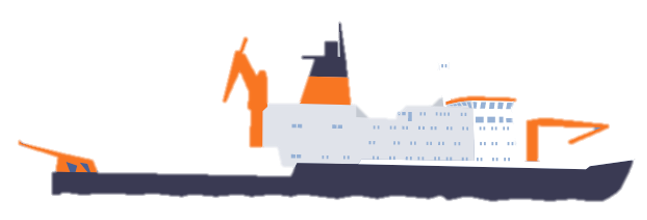Remote, online, and at-home polar learning resources

Do you have resources you'd like us to add to the list below, or is there something in particular you are looking for? Email us at mosaic@colorado.edu!
1. Videos and other multimedia
Frozen in the Ice: Exploring the Arctic MOSAiC MOOC now on Coursera!
Created by the University of Colorado Boulder in partnership with the Alfred Wegener Institute and with funding from the National Science Foundation, Frozen in the Ice: Exploring the Arctic is a new massive open online course (MOOC) about the MOSAiC expedition. The course features 50 videos from MOSAiC scientists and Arctic experts on topics ranging from the behavior of sea ice, to Arctic clouds, to how climate change is impacting Arctic indigenous peoples. All videos are available for free to everyone, and certificates of completion or graduate credits (coming soon) can be obtained for a small fee.
Watch all of the course videos on YouTube
MOSAiC and Arctic video collection from CU Boulder
What is it like to be a baker on the Polarstern? What changes have we been observing in the Arctic climate system? How do you deploy a buoy in Arctic sea ice? Explore our carefully curated collection of MOSAiC and Arctic-related short videos to learn the answers to these questions and more!
Go to the CU Boulder MOSAiC and Arctic video collection
MOSAiC Media Center
Browse this continuously-updated and extensive collection of photos from the MOSAiC expedition, courtesy of the Alfred Wegener Institute.
NOVA Polar Extremes
In this two-hour special, renowned paleontologist Kirk Johnson takes us on an epic adventure through time at the polar extremes of our planet. Following a trail of strange fossils found in all the wrong places—beech trees in Antarctica, hippo-like mammals in the Arctic—Johnson uncovers the bizarre history of the poles, from miles-high ice sheets to warm polar forests teeming with life.
National Science Foundation Multimedia Gallery
The National Science Foundation has an awesome collection of videos that will transport you to the Arctic and Antarctica. How might ancient ice help us predict future climate? Is there really a volcano beneath the West Antarctic ice sheet? And why are penguins so darn cute and charismatic?
Go to the NSF Multimedia Gallery
Weekly Arctic Sea Ice Age Visualization: 1984-2019
Created by NASA's Scientific Visualization Studio, this animation shows the age of sea ice in the Arctic between 1984 and 2019. One important change happening in the Arctic visible in this animation is a decrease in multi-year, or 'perennial', sea ice in the Arctic over time. Why do you think this is happening, and what may be its implications?
Go to Weekly Arctic Sea Ice Age Visualization: 1984-2019



2. At-home learning activities
CU Boulder's MOSAiC and polar-related learning activities
We've put together a collection of educational activities related to MOSAiC, the Arctic, and the Antarctic for a wide variety of grade levels. Many of these activities can be done at home, and in the coming weeks we'll continue to add more. Check back often!
CU Boulder MOSAiC and polar-related activity collection
Featured resource: MOSAiC Math
Science learning at home and outside from the Center for Alaskan Coastal Studies
The Center for Alaskan Coastal Studies has put together an impressive assortment of at-home and outdoors activities for kids of all ages. Bingo games, scavenger hunts, hands-on activities, and arts and crafts - you name it, they've got it. Have some Oreos in your pantry? Learn some geology from them! In a drawing mood? Practice your scientific sketching.
Check out the Center for Alaskan Coastal Studies at-home and outside learning activities
PolarTREC polar education resources
PolarTREC is a wonderful program that provides educators with polar-related educational materials and sends teachers out on polar expeditions, including MOSAiC! Learn about Arctic and Antarctic topics through PolarTREC's online educational resources. Connect directly with scientists in polar regions through the PolarConnect program, or become an active member of the citizen science project PenguinWatch. Check out their website to learn more!
PolarTREC educational resources
National Science Foundation Arctic and Antarctic Learning Resources
Although many of these resources from the National Science Foundation and other organizations were originally designed for classroom use, they can be used as-is or adapted for home use. Check out this extensive list of credible learning resources for a variety of grade levels
Browse the NSF Arctic and Antarctic Learning Resources
Hands-On Science At Home: Create your own brine channels
You can create your very own sea ice cores and observe brine channels with a few simple materials from your kitchen! Check out the experiment below, created by Kyle Kinzler at Arizona State University. Photo credit: ASU
Create your own sea ice cores and brine channels



3. Online interactives and activities
Submit your artwork to the virtual Museum of MOSAiC Art
Got the creative bug? We want your artwork! Submit photos of your MOSAiC and Arctic-related artwork to the virtual Museum of MOSAiC Art and we'll showcase it in one of our galleries.
Browse the Museum of MOSAiC Art galleries
#askmosaic: Send your questions to MOSAiC scientists and crew!
Have questions about the MOSAiC expedition or the Arctic? Send us your questions, and we'll ask MOSAiC scientists and crew members to answer them!
Submit your #askmosaic questions
Check out submitted questions and answers here
360-degree virtual Arctic expeditions
Just because you are at home doesn't mean you can't experience what it's like to be an Arctic explorer. Learn more about the 1893-1896 Fram expedition to the Arctic through an immersive 3D virtual Google Expedition, step out on to the ice with MOSAiC scientists, or take a 360-degree tour of the MOSAiC icebreaker Polarstern, all from the comfort of your couch!
MOSAiC Distributed Network Google Expedition
Explore the Arctic Aboard the Fram Google Expedition
Take a 360-degree virtual tour of the Polarstern
NASA: Fly through Greenland ice in this 360-degree experience
Track the Polarstern and Arctic conditions in real time
You can keep track of the Polastern's location in the remote Arctic in real time as well as the meteorologic and oceanographic conditions participants are experiencing and a daily blog from the ship with the MOSAiC web app and the Fluid Earth Viewer. With the Fluid Earth Viewer, you can compare what's going on in the Arctic with your own neck of the woods!
Check out the Fluid Earth Viewer web app
Follow MOSAiC with Reach the World
The MOSAiC education team has partnered with Reach the World to bring you more MOSAiC in your week! Every couple of weeks different MOSAiC team members will be featured on the Reach the World MOSAiC expedition page. Sign up for Reach the World's Explorer Program to learn more and get involved!
Reach the World MOSAiC expedition page
*New* Reach the World At-Home Learning
In light of recent events, RTW has launched an at-home learning site where they will share free virtual learning lesson plans, host video conferencing tutorials, and share curated lists of resources for educators and parents.
Check it out: RTW At-Home Learning
Polar Bear Tracker from Polar Bears International
Polar Bears International is tracking the positions and movements of several polar bears in the Arctic, and now you can track them too! Check out the tracking map to find out where the polars bears are, and read updates on how each of the bears is doing.
NOVA Polar Lab
Something big is happening to Earth’s climate, and the polar regions hold the key to understanding it. Join top scientists in this immersive, multimedia experience on the hunt for clues that tell a surprising story about our planet’s past...and preview where we might be headed.
UCAR Center for Science Education: Comparing maps of Arctic sea ice
Has has Arctic sea ice extent changed over time? Select maps of sea ice extent, courtesy of the National Snow and Ice Data Center, for a variety of months and years to compare how sea ice varies seasonally and over longer periods of time in the Arctic.
Esri Canada K-12 Education: Explore the Arctic Ocean with GIS
The Arctic region, surrounding the North Pole, consists of a large ocean surrounded by land. This ocean, called the Arctic Ocean, is like no other on Earth. In this activity, you will explore the Arctic Ocean, the importance of Arctic sea ice, and how the Earth's changing climate impacts both Arctic and global systems.
Go to Exploring the Arctic Ocean activity
Ocean Wise - Ocean Literacy Courses for Elementary, Middle and High School Students
These online courses are free, self-directed, and interactive for students in grade 3 to 12, and anyone who is interested in learning more about the ocean. Students can take the course at their own pace, and earn exciting badges for every accomplishment they make throughout the course.
Check out Ocean Wise's Ocean Literacy Courses



4. Live virtual programs for kids and adults
Exploring by the Seat of your Pants video calls with scientists and explorers
Connect directly with scientists, explorers, photographers, and more around the globe through live video calls! Exploring by the Seat of Your Pants hosts multiple live calls each day that you can tune in to on YouTube. You can even submit questions in real time through the YouTube chat box! Past recorded video chats are also freely available to watch, including ones with MOSAiC scientists, engineers, educators, and videographers. More MOSAiC video calls are scheduled, so keep an eye on the EBTSOYP webpage for what's coming up!
Exploring by the Seat of Your Pants MOSAiC expedition webpage
Exploring by the Seat of Your Pants YouTube channel
Ocean Protection Advocacy Kids - Free Ocean Webinars
Although not specifically about the Arctic, these free webinars are designed to engage kids of all ages in everything from ocean chemistry to plankton to sea creature adaptations. Live webinars will be broadcasted on Zoom and YouTube live, and past recorded webinars can be accessed via YouTube. OPAK also provides follow-up activities so that the learning can continue even after the webinar is over!
Learn more about OPAK's free ocean webinars
Fiske Planetarium at CU Boulder: Dome to Home
Not necessarily polar-related, but a chance to transport yourself and your kids to a similarly remote and alien place: Want to bring your students or kids to the planetarium, but from the convenience of their home? Join the Fiske Planetarium's Dome to Home video series - FREE weekly planetarium shows with lessons designed to compliment your school's science objectives or simply engage your child. Each week will feature a different topic for 20-30 minutes.
Learn more and check out the Dome to Home video schedule here
A new webinar series: INTERACT Stories of Arctic Science and Stations
Join Tuesday afternoons at 14:00-15:00 CEST to hear captivating stories about Arctic research stations and science done at them with support from INTERACT Trans-National Access! Each webinar consists of two 30 min popular science presentations, and they are open for anyone to attend.
Learn more and attend a webinar